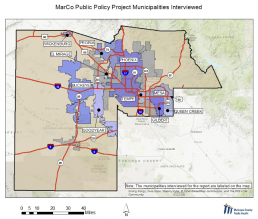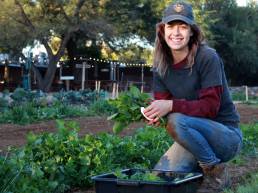Overview
Our Assessment Approach
How does the fourth most populous and fastest growing county in the United States feed itself when faced with daunting land, water, and development challenges? How do we preserve our diverse agricultural heritage and grow a food system in Maricopa County that is equitable, healthy, sustainable and thriving?
To answer these questions, the Coalition conducted the county’s first comprehensive regional food assessment: a snapshot in time of how the food system within a specific geographic region is working well, and where it needs to be improved. We focused on the issues facing growers, eaters, and the networks that link the two, in addition to the current state of on-farm agriculture, municipal policy, and the productive resources of land and water. This food assessment was funded by a generous grant from the Gila River Indian Community.
Key Findings
Learn about community food networks, eating, agriculture, and policy in Maricopa County and download original reports
Community Food Networks
“Local food†is a commonly used term based on geographic or location-based boundaries in a food system. “Community-based food systems†go beyond geographic boundaries and consider food systems through the lens of people and their relationships with one another.
In this part of the assessment, we wanted to better understand the relationships, connections, shared values, and motivations that drive community food system efforts in the region, as well as major challenges and opportunities facing food and farming stakeholders. We worked with Ken Meter of Crossroads Resource Center to interview 33 key stakeholders. Results were synthesized into case studies, social network maps of the county’s community food networks, and key recommendations.
While there is a strong market for food grown in the Phoenix metro area, farmers reported a lack of support from civic leaders, feelings of isolation (with one stakeholder calling the current state “food silos” rather than a “food system”), and challenges such as scarce labor and supportive infrastructure such as processing. Most importantly, farmers growing for local markets lack trusted organizational representation across decision-making bodies at various levels. Read the full report to learn more.
“Everyone wants to have a farmers’ market but you have to prove there is enough trade to attract farmers — and you have to have farmers, too!â€
Key Stakeholder, Building Community Food Networks Report
33
key stakeholders interviewed
11
farm and food businesses interviewed
9
food distributors interviewed
Eating in Maricopa County
Food choice is influenced by a number of factors including culture, income, education, and the availability and affordability of healthy foods where we live, learn, work, and play.
In this part of the assessment, we explored the state of diet-related health, food access, and food insecurity by analyzing data from Maricopa County’s 2016 Community Health Needs Assessment, Arizona Department of Health Services, Feeding America, and USDA.
In order to engage more diverse voices and understand local resident perspectives related to their community food system, the Coalition collaborated with Community Alliance Consulting to hold a series of Community Food Conversations in Glendale, South Phoenix and Tempe. The goal was to learn from residents about what they felt was missing from, and what is strong about the way their community grows, sells, buys, or eats food; as well as what the community values most when it comes to food.
“I would [like to] see more community gardens where people like me can grow and farm their own food, perhaps at the parks, or at the empty lots by the community kitchens...convert the ugly lots in places where food can be grown. Not only vegetables and fruits, but kitchens for meat and eggs, and this food would be cheaper, fresher, healthier and we can enjoy it with others...we can share it and prepare it together and that would make us happier."
Participant Quote, Tempe
1 in 5
Maricopa County children experience limited or uncertain availability of food
17%
of residents report eating 5 or more servings of fruits and vegetables each day
200K
estimated Maricopa County residents must travel more than a mile to get to the nearest supermarket or full service grocery store
Agriculture in Maricopa County
There is no food without thriving agriculture. With this understanding, we partnered with The University of Arizona Cooperative Extension to explore the diversity of farms and agricultural production in the region and their influence on our local economy.
There is no agriculture without adequate land and water resources. Data from the United States Department of Agriculture (USDA) and Arizona Department of Water Resources (ADWR) were examined to understand how policies and land use development patterns are currently shaping the local food system.
We learned that on-farm agriculture is an important contributor to our local economy. Maricopa County is an agricultural leader in both the state of Arizona and in the nation. However, an overwhelming majority of farmers, many of which are small growers, share just 5% of all sales. The county’s potential to grow its own food is small and shrinking due to the loss of productive agricultural land and water to competing urban development.
The population of Maricopa County skyrocketed from 946,000 in 1969 to over 4.4 million in 2018. During that same timeframe, the total amount of irrigated acreage available for growing food crops decreased from 458,055 acres to 180,214 acres.
Source: US Census and USDA Census of Agriculture
$1.95B
contributed to Maricopa County economy
Top 1%
nationally among counties for vegetable, melon, and potato crop production
60
the average age of a Maricopa County farmer
Local Food Systems Policy
The MarCo Policy Work Group partnered with The Planning Center to examine municipal policies and regulations that relate to and advance the local food system.
Policy information was gathered from 10 diverse cities and towns across Maricopa County through an online survey and interviews with city/town staff involved in planning, sustainability, public works, economic development, and community development departments.
These policies, for example, might relate to community gardens, farmers’ markets, mobile food vending, food waste, local water use, farmland preservation, and community engagement. A particular focus was placed on goals and policies included within city General Plans, which serve as road maps and accountability tools for local decision-making.

10
municipalities participated in this study
6
cities include policies in their General Plans that support the local food system
1
city has developed a Food Action Plan
Featured Case Study
Mapping Local Food Assets with Good Food Finder AZ
Local First Arizona Foundation currently manages Good Food Finder, a directory of farmers and food producers in the state of Arizona. Good Food Finder helps the public get to know the diversity and abundance of food produced in the state, support producers as they grow their business, and bring awareness to the importance of agriculture and its role in the state’s history and economy.
As part of the food assessment, Local First updated 567 existing listings and added 144 new listings within the region. After the assessment was completed, Local First recognized the need to better connect growers and eaters with one another and updated Good Food Finder to become more user-friendly and provide even more resources for growers, families, and food buyers in Arizona.

Where Do We Go Next?
Opportunities for Action
The following key opportunities were identified for the Coalition to focus our education and engagement efforts around, in our collective attempt to improve our community food system.
Convene informal meetings in which diverse farmers build trust among each other, and ultimately with diverse civic leaders.
Advocate for public policy and investment that fosters community health, wealth, connection, and capacity.
Explore new and diversified markets that are scalable and flexible to meet the needs of small to medium-sized producers.
Implement an “Eat Local” campaign to support local producers and ignite pride in regional food.
Continue to engage eaters using equity and justice approaches with a focus on food in building community, food access solutions, and food quality and value.
Get Involved
Are you or your organization interested in learning more about the food assessment? Are you already engaged in work related to the above opportunities? If so, we’d love to hear from you.